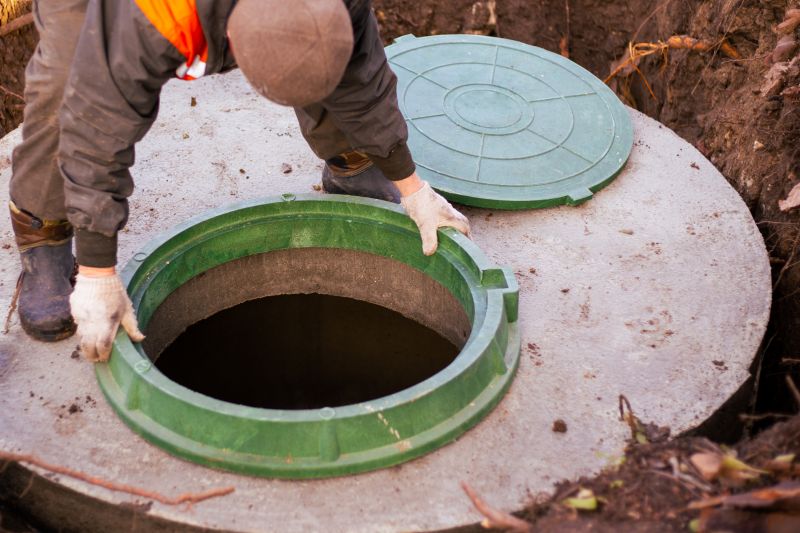Favorite Tools And Products For Septic System Installation Projects
Discover trusted tools and materials that make septic system installation easier and more effective.
 Installing a septic system involves a variety of components that work together to ensure proper waste management for properties not connected to municipal sewer lines. The process begins with site assessment and planning, followed by the selection of suitable products that can handle the specific demands of the location and usage. From septic tanks to distribution boxes, filters, and piping, each element must be chosen carefully to ensure longevity and reliable operation. Proper installation and maintenance are essential to prevent issues such as backups, leaks, or system failure.
Installing a septic system involves a variety of components that work together to ensure proper waste management for properties not connected to municipal sewer lines. The process begins with site assessment and planning, followed by the selection of suitable products that can handle the specific demands of the location and usage. From septic tanks to distribution boxes, filters, and piping, each element must be chosen carefully to ensure longevity and reliable operation. Proper installation and maintenance are essential to prevent issues such as backups, leaks, or system failure.
Top Overall Option
Septic Tank System
A septic tank system is a comprehensive solution that includes a durable tank, distribution box, and inlet and outlet pipes designed to handle wastewater effectively. These systems are constructed from robust materials such as high-density polyethylene or fiberglass, which resist corrosion and environmental stress. Properly selected septic tanks are available in various sizes to accommodate different household or commercial needs, offering a reliable foundation for the entire septic setup. When choosing a septic tank system, consider factors like capacity, material, and ease of installation to ensure it aligns with your property requirements.
Types of Products For Septic System Installations
Septic Tanks
Septic tanks are the core component of a septic system, designed to hold and treat wastewater through natural separation processes.
Distribution Boxes
Distribution boxes evenly distribute effluent from the septic tank to drain fields, ensuring balanced flow.
Effluent Filters
Effluent filters prevent solids from entering drain fields, reducing clogging and maintenance needs.
Piping and Connectors
Durable piping and connectors facilitate proper flow from tanks to drain fields, often made from PVC or ABS plastics.
Inspection Ports
Inspection ports provide access points for system monitoring and maintenance inspections.
Drain Field Materials
Drain field materials include gravel, pipe, and fabric to support efficient wastewater dispersal underground.
Aerators
Aerators introduce oxygen into septic tanks to promote aerobic bacterial activity, enhancing treatment.
Septic Tank Accessories
Additional accessories such as lids, risers, and vent stacks facilitate installation and maintenance.
Leach Fields
Leach fields disperse effluent into the soil, requiring proper design and installation for optimal performance.
Pump Systems
Pump systems are used in systems where gravity flow is insufficient, moving effluent to designated areas.
Pre-treatment Units
Pre-treatment units improve effluent quality before it enters the drain field, often used in challenging soil conditions.
Backup Alarms and Monitors
Monitoring devices alert homeowners to system issues, helping prevent costly repairs.
Popular Choices
Septic tanks in various sizes and materials are frequently selected for their reliability and ease of installation.
Widely used for even distribution of effluent across drain fields, available in multiple configurations.
Popular for reducing solids entering drain fields, helping maintain system performance.
PVC pipes are common due to their durability, ease of installation, and resistance to corrosion.
Essential for routine inspections and maintenance, widely used in septic system setups.
Used in drain fields to support proper effluent dispersal and soil filtration.
Risers provide easy access for inspection and maintenance, increasing system accessibility.
Aeration units are gaining popularity for their role in promoting aerobic bacterial activity.
Pump tanks are commonly used in systems requiring effluent movement to distant drain fields.
Perforated pipes designed for effective effluent dispersal in the drain field.
Septic system products are designed to facilitate effective separation and treatment of wastewater, often requiring durable materials capable of resisting corrosion and environmental wear. The installation process should adhere to local codes and standards, emphasizing the importance of selecting compatible and high-quality components. Additionally, accessories like inspection ports, aerators, and effluent filters can enhance system performance and ease of maintenance.
Choosing the right products involves considering factors such as capacity, material quality, ease of installation, and compatibility with existing infrastructure. While some components are straightforward, others may require specialized knowledge or tools for proper setup. Investing in reliable products can contribute to a trouble-free operation, minimizing the need for repairs or replacements over time. Whether you are planning a new installation or upgrading an existing system, understanding the range of available products can help make informed decisions tailored to your specific needs.
Key Buying Considerations
- Assess the capacity needed based on household size or property use to ensure proper flow and treatment.
- Choose materials that are resistant to corrosion and environmental wear for longevity.
- Verify compatibility of components with existing or planned drain field systems.
- Consider ease of installation and whether professional assistance is recommended.
- Evaluate the quality and durability of the septic tank and associated components.
- Check local codes and regulations to ensure compliance with installation standards.
- Opt for products that allow easy access for inspection and maintenance activities.
- Consider system expandability if future property modifications are anticipated.
- Review warranty and support options offered by manufacturers or suppliers.
- Factor in the soil conditions and site-specific requirements for drain field components.
- Look for accessories that facilitate troubleshooting and system monitoring.
- Determine if additional features like aeration or pre-treatment are necessary for your site.
- Assess the availability of replacement parts and ease of repairs.
- Think about the environmental conditions, such as groundwater level and soil type, that may influence product choice.
- Budget appropriately, balancing cost with quality and longevity of components.
